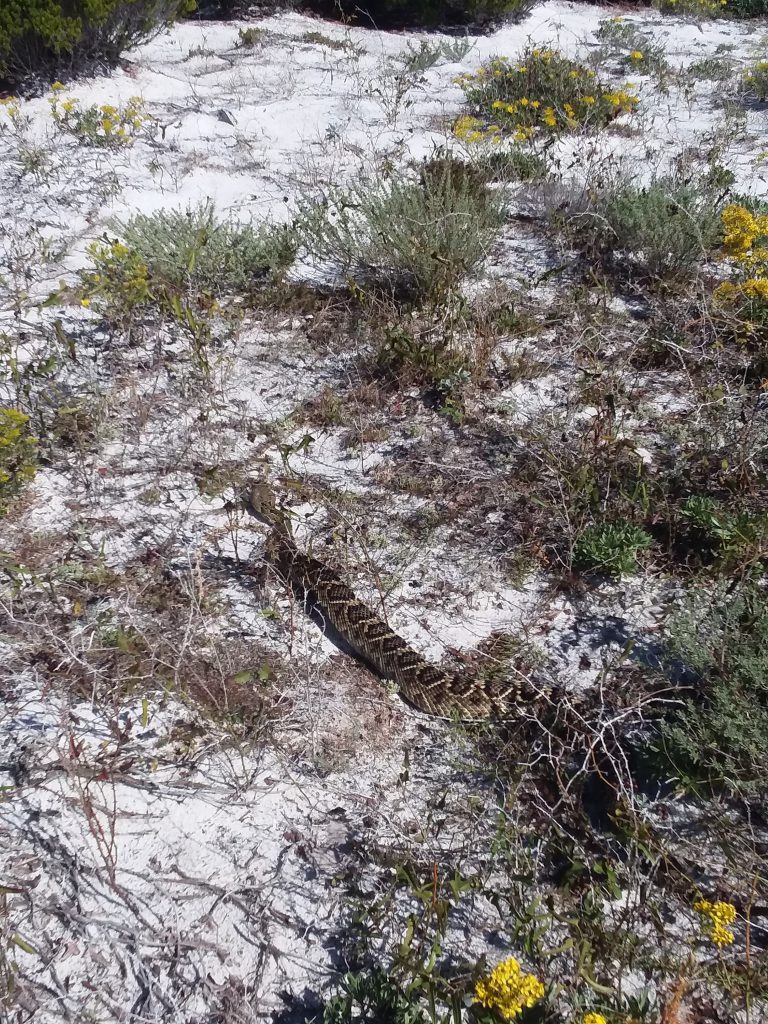This sounds similar to the idea that has been discussed about protecting some species of sharks. Do we really want to do this?
It reminds me of an interesting situation that was created when they passed the Marine Mammal Act in 1972. The law seemed simple enough. Citizens wanted to protect our marine mammals – such as whales, dolphins, and manatees. But it also included the polar bear, a dangerous animal. If you lived in a community where polar bears existed, and had one enter town that could possibly be a threat to the citizens, could you shoot it? A colleague of mine had a brother who worked with Alaska Fish and Game. We asked this question. He told us that – yes, if you were threatened by one you would shoot it. But you would have to defend yourself in court that it was defense and that you were not actively hunting the bear.
It seems odd to some that we would even consider protecting a creature that is potentially lethal to humans. But, as has been said so many times before, though they are potentially lethal, they rarely are. Rattlesnakes are different from polar bears in they do not seek us out when they are near us. They actually try to avoid us. In the United States only 5-6 people die each year from venomous snakes bites1. Comparing this to the number who die in car accidents, gun violence, or opioid overdose, there is no comparison. So, though the potential is there it is a very low risk. We can also note that many who bitten by snakes were trying to catch or kill the animal.
On the other side of the coin, these animals do us a service by controlling disease caring rodents. When predators select and kill prey, they tend to select one that is easy to catch and kill. Most predators not only have teeth, but hands and claws to grab the prey. The only thing a snake can do when it sees a rodent is grab it with its mouth and hold on. Many snakes do this, almost 90% of those in Florida do. But a few have venom. This can be injected into the prey so that the snake does not have to hold on, making the process much easier. It makes sense for snakes to have venom and is surprising that more do not. However, this venom was meant for killing prey, not for defending against predators. And rattlesnakes, like other venomous snakes, do not want to use it on humans if they can avoid it. As my professor told us in college venom is “expensive”. It is a complex cocktail of proteins they must produce, and they do not want to waste it.
So, though it seems strange that a state or federal agency would even consider protecting dangerous animals, they do. These creatures play a vital role in the ecology of local systems and if their numbers decline that role is not filled and the spin-off results could have larger negative impacts on us.
The U.S. Fish Wildlife Service has been petitioned to list the eastern diamondback rattlesnake (Crotalus adamanteus). This animal inhabits several habitats within the coastal southeastern United States. The National Council of Air & Stream Improvement, Inc. – a scientific research organization that provides technical information on environmental issues concerning forestry and forestry products – is conducting a survey to better understand its distribution and habitat preferences. They are asking people to report sightings of this snake. You can do so by visiting the following link. Please take photos.
https://www.surveymonkey.com/r/7NWT2YN.
If you have questions about the project or survey, you can contact Angie Larsen-Gray at alarsen-gray@ncasi.org.
Reference
1 Johnson, S.A. 2020. Frequently Asked Questions About Venomous Snake Bites. UF Wildlife – Johnson Lab. Department of Wildlife Conservation. University of Florida. https://ufwildlife.ifas.ufl.edu/venomous_snake_faqs.shtml#:~:text=The%20chances%20of%20dying%20from,will%20die%20from%20snakebite%20(5%2D.

- Our Environment: Part 11 – We Need Water - July 7, 2025
- Our Environment: Part 10 – Improving Agriculture - June 20, 2025
- Marine Creatures of the Northern Gulf – Snails and Slugs - June 20, 2025
